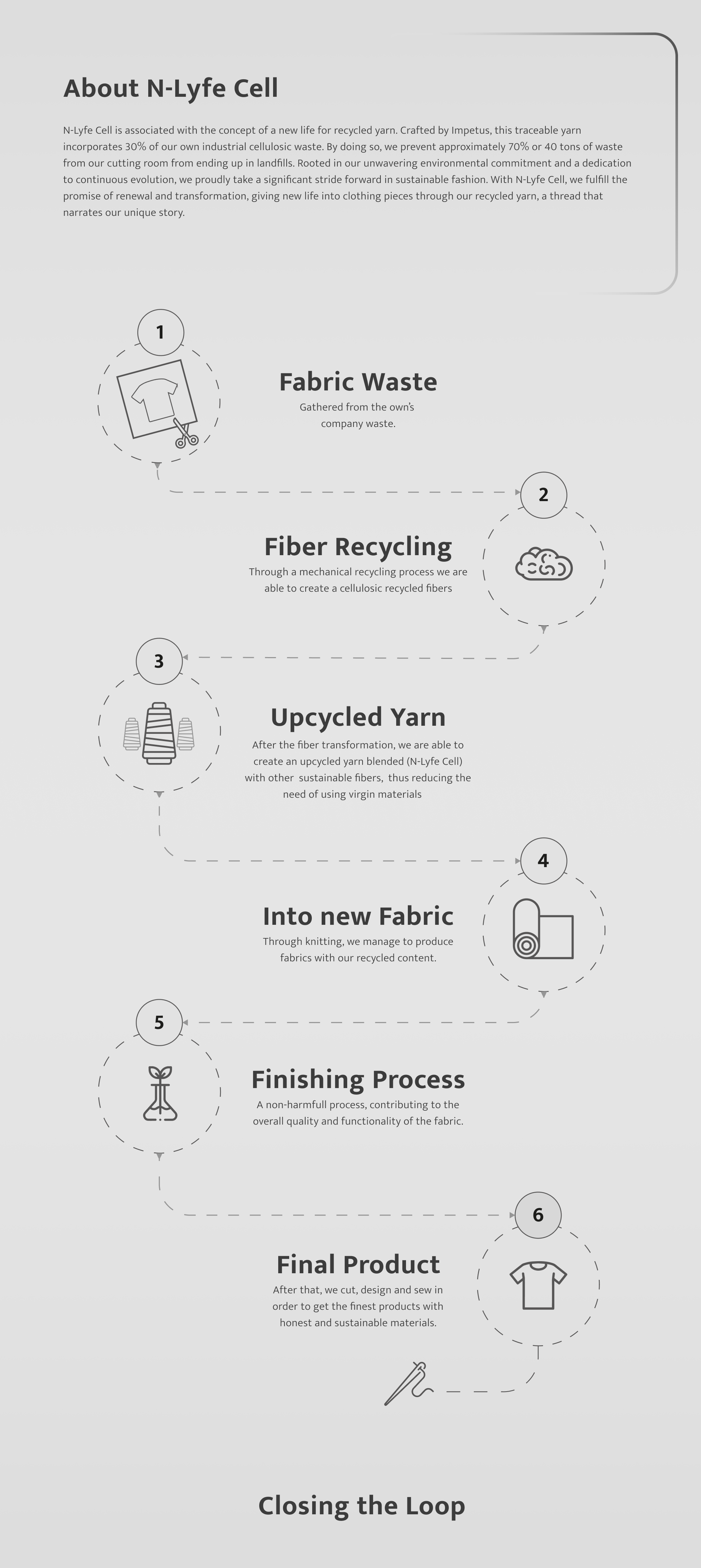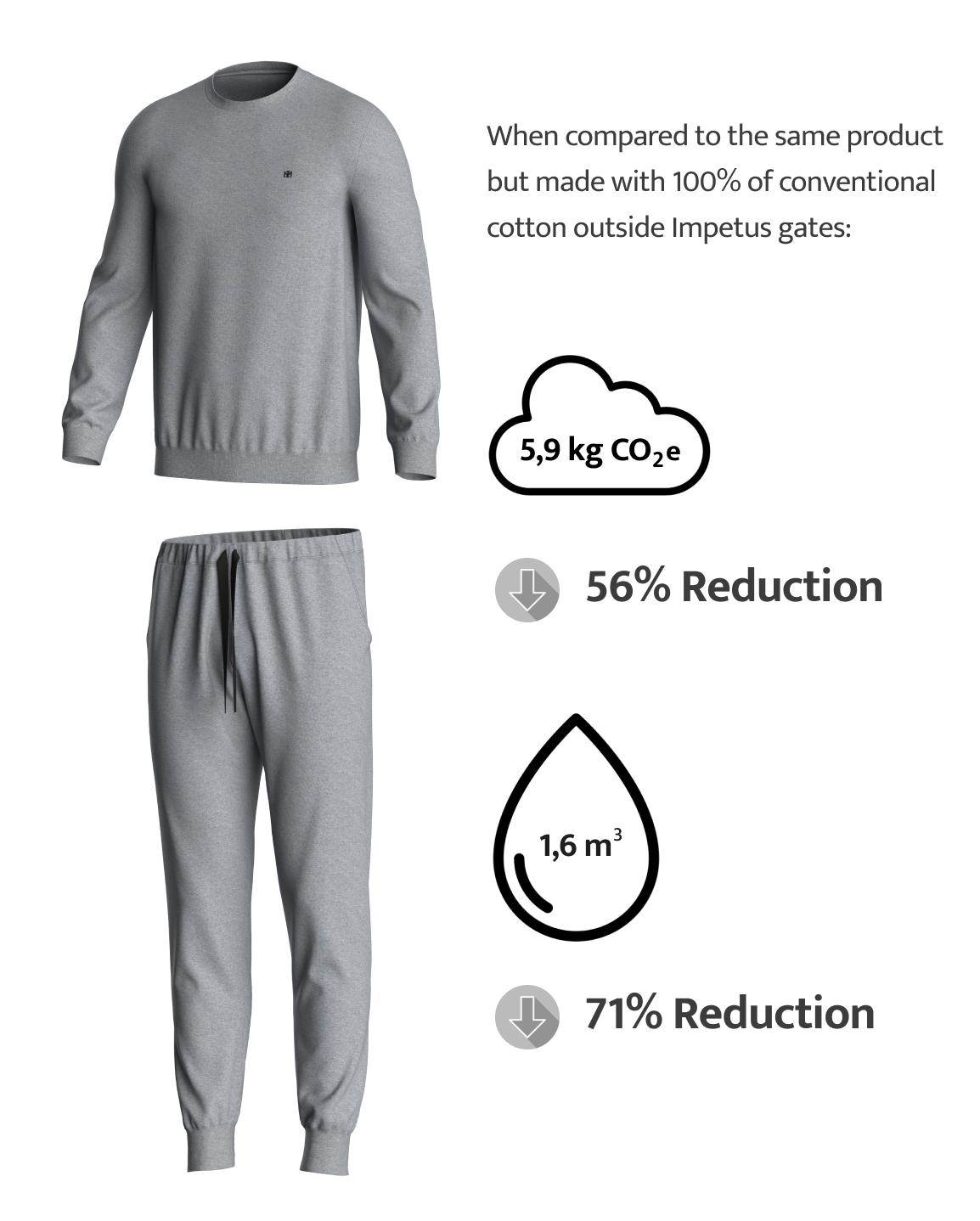- Home
- N-LYFE
 |
Revealing Sustainability through Life Cycle Analysis (LCA)At Impetus, we have carried out a detailed life cycle assessment of our REVIVE product to evaluate its environmental impact, and compare it with a scenario where the fabric is entirely made from conventional cotton. Our mission? To demonstrate the clear advantages of choosing sustainability without compromising on comfort and quality. But how does Revive made with our N-Lyfe yarn stand out compared to conventional cotton? We meticulously analyzed every life cycle step, from the extraction of the raw material to product packaged and ready to be shipped to our customers. Our LCA show that while Revive has a carbon footprint of just 5,9 kgCO2e, using conventional cotton would result in a footprint of 13,5 kgCO2e. This means our Revive product offers a 56% carbon footprint reduction compared to conventional cotton fabric. A significant difference that demonstrates the positive impact of opting for sustainability. But it doesn't stop there. Thanks to our advanced N-Lyfe yarn, Revive goes beyond carbon reduction, it is also water-saving pioneer. Our analysis reveals an astounding 71% decrease in water consumption. This isn't just about the product; it's about redefining industry standards and paving the way for a greener future for generations to come. |
|
LCA of REVIVEScroll Right to Discover --> |
 |
 |
LCA of Comparative ProductScroll Right to Compare --> |
 |
Our comparative LCA adopts a cradle-to-gate perspective, encompassing all environmental impacts from raw material extraction to packaging of the final product, as illustrated in the provided scheme. All impacts related to energy, water, and raw materials at each stage were thoroughly evaluated. In the specific case of our Revive product, all its components, including cords, elastics, and even embroidery and sewing thread, were meticulously considered in the impact analysis. Primary data was used, supplemented with information from the literature or LCA databases where necessary. This approach ensures that our LCA is based on solid and representative data, contributing to a precise, transparent, and comprehensive analysis of the environmental impacts associated with the product life cycle. For the hypothetical scenario where the fabric is made with 100% conventional cotton yarn, outside Impetus gates, data from the literature and LCA databases were used and Revive data were extrapolated in the absence of bibliographic information with global emission factors. |
 |
In addition to assessing carbon footprint and water consumption, we conducted analyses across a total of 18 environmental impact categories. Below, we highlight another 4 of these categories: - Freshwater ecotoxicity potential and Freshwater eutrophication potential: We achieved significant reductions of 79% and 82%, respectively. This reduction is attributed to the elimination of the need for dyeing, resulting in lower chemical usage, coupled with regenerative agriculture practices adopted by GEC, which reduce the demand for inputs such as fertilizers and pesticides. - Agricultural land occupation: By incorporating 30% pre-consumer cellulose waste and substantially reducing energy and raw material usage, we achieved a 63% reduction in this indicator. - Ozone depletion: We observed an impressive 86% decrease in the impact on the reduction of the ozone layer in the Earth's stratosphere, reflecting Revive contribution to ozone layer preservation. |
Ready to enjoy comfort while making a sustainable choice?Choose Revive and experience the comfort and quality of conscious living. |
Produto(s) adicionado(s) ao carrinho

